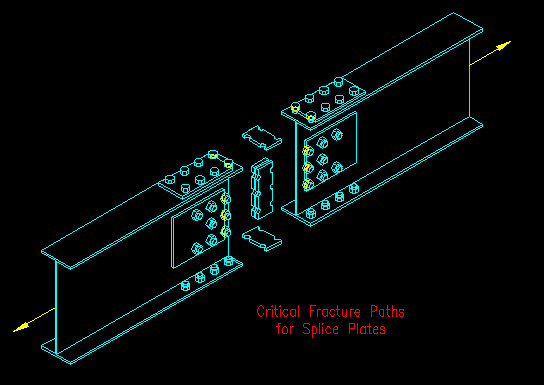
Path G,H-L-N-R-Y,Z Net Area
Since thickness is not constant along the path, it is easier to look at this problem in different manner than you would if you had a constant thickness along the path.
The logical approach is to look at things in terms of AREA. In this approach you add and subtract area from the member gross area.
Net Area = Gross area - Cross Sectional Area of Holes + Additional Area Due to Stagger
Gross Plate Area = 2*(10")(0.5") + 2*(10")(0.375") = 17.50 in2
For this problem there are holes in both the flange and the web plates
EFFECTIVE HOLE DIAMETER = bolt dia. + 1/16" for std hole + 1/16" damage allowance
HOLE AREA = (effective hole diameter) * t
FLANGE PLATE HOLE AREA = (.875" + .125") * (0.50") = 0.50 in2
WEB PLATE HOLE AREA = (.875" + .125") * (0.375") = 0.375 in2
There are no staggers on this path. There are a total of four flange plate holes and six (there are two web plates with three holes each) web plate holes
Net Area = Ag - 4 flange hole areas - 6 web hole area
Net Area = 17.5 in2 - 4*(0.50 in2) - 6*(0.375 in2) = 13.25 in2
